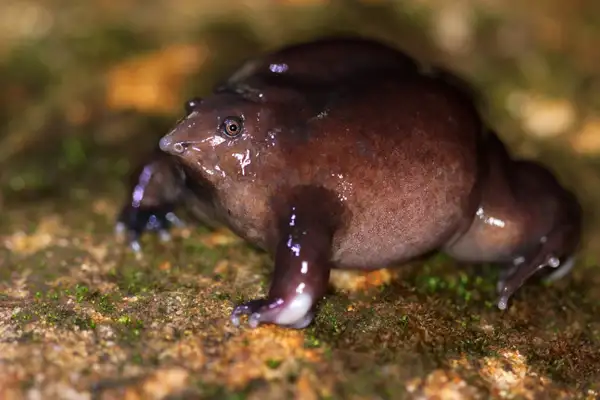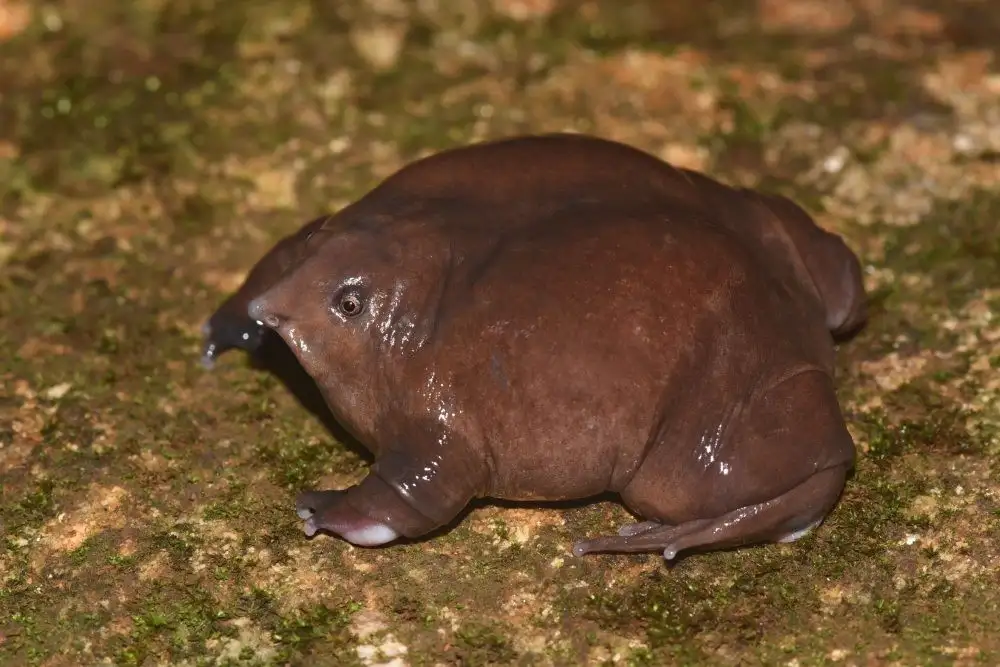A special fund has been established to protect the purple frog (Nasikabatrachus sahyadrensis), a unique amphibian native to the Western Ghats in India.
About Purple Frog:
- The purple frog (Nasikabatrachus sahyadrensis) is a species of amphibian that is native to the Western Ghats in India.
- It is also known as the Mahabali frog.
- It is believed to have co-existed with dinosaurs, the Purple Frog is often dubbed as a ‘living fossil’, as it has similarities to the Sooglossidae family of frogs in Seychelles, supporting the Gondwana landmass hypothesis.
- It’s considered one of the rarest frog species and a “once in a century find” by bio-geographers worldwide.
- Diet: Adult purple frogs eat small invertebrates, primarily termites.
Habitat:
- It is endemic to Kerala and Tamil Nadu States of the Western Ghats mountains.
- The Anamalai hills near Coimbatore is one of the prime habitats of the Purple Frog in Tamil Nadu, while they occur in higher numbers in the Western Ghat mountains in Kerala.
- The purple frog is underground for most of the year, except for 2-3 weeks during the monsoon when it comes out to mate.
Characteristics:
- It is a rare frog having a triangular shape bloated body with small eyes, pointed snout and stout limbs.
- Its small eyes indicate that it doesn’t need much sight.
- The frog’s triangular shape helps it navigate the damp earth of its forest homes.
Two types in Tamil Nadu:
- Tamil Nadu is home to two types of Purple Frog: Nasikabatrachus sahyadrensis and Nasikabatrachus bhupathi.
- The discovery of N. bhupathi, a new species of frog, was made by scientists from the Centre for Cellular and Molecular Biology, Hyderabad, in the eastern slopes of the Western Ghats near the Srivilliputhur Grizzled Giant Squirrel Wildlife Sanctuary in Tamil Nadu in 2017.
- The frog was named after Indian herpetologist S. Bhupathy.
- The first frog, described by S.D. Biju and Franky Bossyut in Idukki district of Kerala in 2003, is another notable species.
Major Threats and Conservation:
- Habitat loss, road networks, and climate change pose significant threats.
- Rain-triggered mating process vulnerable to climate change.
- Pesticide use in plantation areas identified as a potential threat.
- Conservations status: Near Threatened (IUCN) and Schedule I of the Wildlife Protection Act.
About Tamil Nadu Endangered Species Conservation Fund (TNESCF):
- Announced in budget 2024, it marks a significant step towards the preservation of lesser-known and endangered species.
- Purple Frog, pangolin, otter, Nilgiri marten, slender loris, lion-tailed macaque, and dugong among the species included.
- Emphasis on the conservation of lesser-known species often overlooked in traditional wildlife conservation programs.
Ref: Source
| UPSC IAS Preparation Resources | |
| Current Affairs Analysis | Topperspedia |
| GS Shots | Simply Explained |
| Daily Flash Cards | Daily Quiz |



